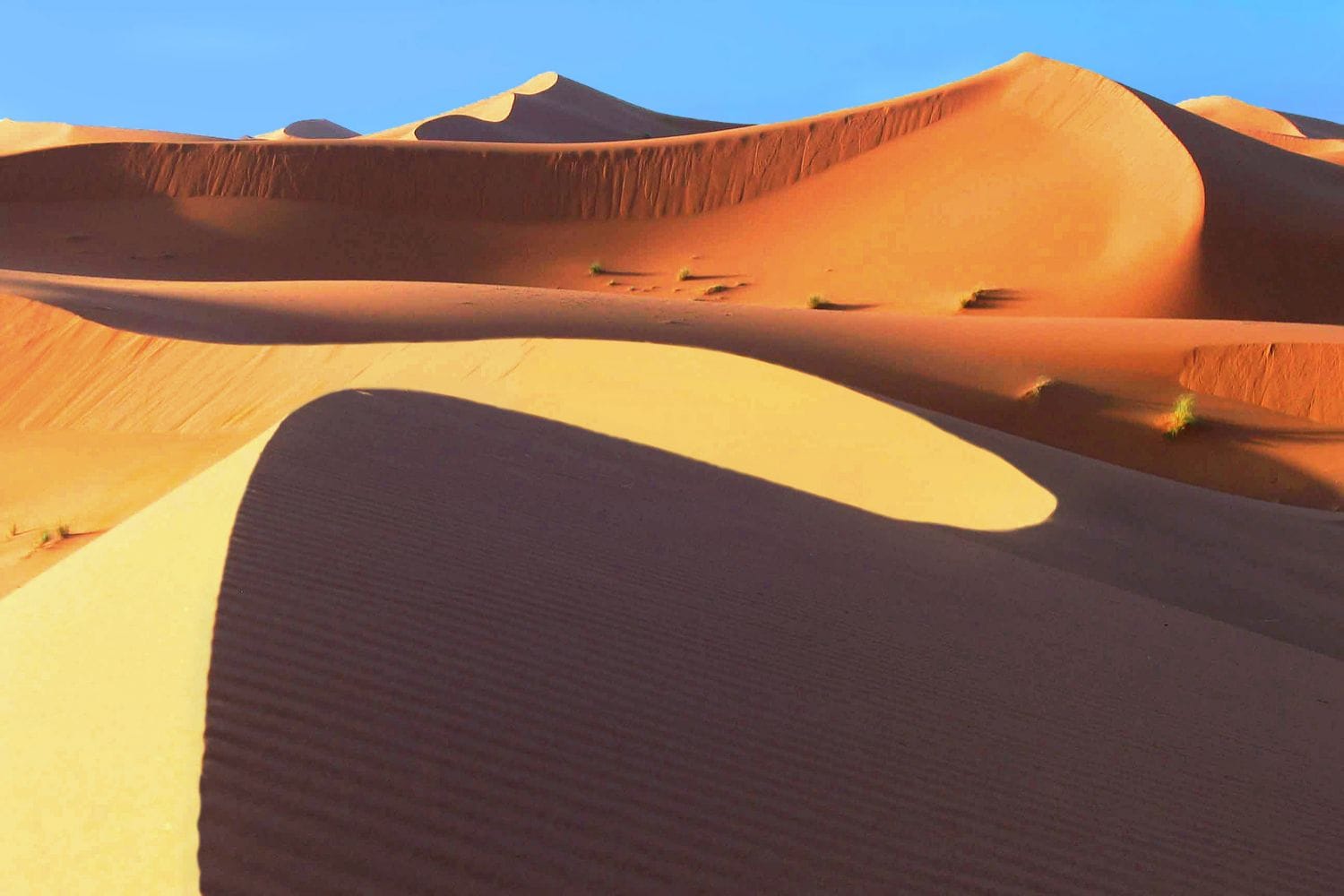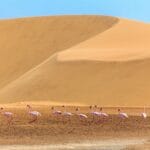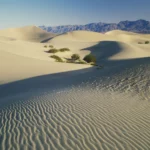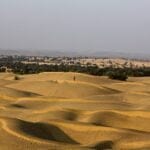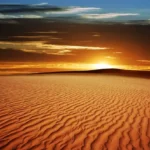Imagine venturing into the heart of Africa’s Sahara Desert, a vast and mysterious expanse stretching as far as the eye can see. Picture yourself amidst towering dunes, ancient rock formations, and a rich tapestry of vibrant cultures. Join us on a journey into the enigmatic Sahara, where we’ll uncover its unique ecosystem, explore its fascinating history, and shed light on its enduring legacy. Let’s embark on a captivating adventure that unravels the secrets of this extraordinary land, revealing its hidden wonders and highlighting its profound impact on Africa and beyond.
Exploring the Sahara: Africa’s Largest Desert
When we think of “desert,” most of us likely envision endless waves of scorching sand. While that image holds true for some areas, the Sahara Desert, the largest in Africa, is far more diverse. This massive expanse of land covers over 3.3 million square miles, encompassing a significant portion of North Africa – spanning across twelve countries! To put that into perspective, the Sahara is almost as big as the entire United States!
Millions of years ago, a massive body of water called the Tethys Sea began to shrink, eventually receding and leaving behind a landscape that gradually transformed into the Sahara we know today.
But don’t think for a second that the Sahara is just one big, monotonous sandbox. Within its borders lies a surprising variety of landscapes. Towering sand dunes, some reaching heights that would rival skyscrapers, rise from the desert floor. Shimmering salt flats, like giant mirrors under the intense sun, stretch across the landscape. Rugged mountain ranges, some ancient and weathered, break up the monotony of the plains.
Of course, it’s scorching hot. In the summer, temperatures can soar to a staggering 122°F (50°C), solidifying its classification as a subtropical hot desert.
But here’s the amazing part: even in this extreme environment, life persists. The Sahara has a surprisingly rich history, both in terms of its natural wonders and the human stories etched into its sands.
Dig down through those sands, and you’d likely uncover a treasure trove of fossils. Scientists have found everything from the massive footprints of ancient elephants to the bones of dinosaurs that roamed the earth millions of years ago. These discoveries offer a fascinating glimpse into a time when the Sahara was a dramatically different place.
And it’s not just prehistoric creatures that have left their mark on the Sahara. Over centuries, the desert has witnessed the rise and fall of countless human civilizations. Ancient rock art, painted and carved onto the desert’s rocks, and the remnants of long-abandoned settlements tell tales of people who thrived in this challenging environment. It makes you wonder about their daily lives and how they adapted to the heat and lack of water.
Even today, the Sahara isn’t a desolate wasteland. Nomadic tribes, like the Bedouins, still call the desert home, herding their animals across its vast expanse. These people are the true survivors, carrying on traditions passed down through generations and proving that humans can adapt to even the harshest conditions.
The Sahara Desert is much more than just an empty, hot space on the map. It’s a place of remarkable contrasts, where scorching heat meets unexpected life, and where the echoes of ancient history whisper through the wind. If you ever get the chance to visit, be prepared to be amazed by the raw beauty and quiet power of Africa’s largest desert.
Is the Sahara Desert Bigger Than Brazil?
We’ve established that the Sahara Desert is huge, but how huge are we talking, really? Is it big enough to swallow a country the size of Brazil?
The Sahara Desert sprawls across North Africa, covering a mind-boggling 9 million square kilometers. Now, let’s talk about Brazil, a country famous for its vast rainforest and sprawling landscapes. Brazil boasts an impressive 8.5 million square kilometers.
So, the Sahara Desert, with its seemingly endless dunes and scorching sun, takes the size crown. It’s officially bigger than Brazil! But remember, size isn’t everything. Both of these incredible landscapes hold unique wonders and play vital roles in our planet’s ecosystem.
Is the Sahara Desert Bigger Than India?
We’ve been talking about how huge the Sahara Desert is, but just how big is it compared to a place like India?
The Sahara Desert sprawls across Northern Africa, covering a mind-boggling 9.4 million square kilometers. Now, let’s look at India. This incredible country in South Asia takes up a respectable 3.3 million square kilometers. While still enormous, it’s dwarfed by the sheer scale of the Sahara.
Essentially, you could comfortably fit nearly three Indias within the Sahara Desert’s boundaries!
Which Desert Is Bigger: Sahara or Antarctica?
We’ve already established that the Sahara Desert is huge. However, when we broaden our horizons to look at all the deserts on Earth, a new contender emerges from the icy depths: Antarctica.
You might be thinking, “Wait, Antarctica? But it’s covered in ice and snow! How can that be a desert?” We usually picture deserts as scorching landscapes baked by the sun, but the real key to being a desert lies in the lack of precipitation.
Antarctica, despite its frozen appearance, receives less than 8 inches of precipitation annually, making it drier than the Sahara. This lack of rainfall (or snowfall, in this case) is what earns it the title of “desert.”
Let’s talk about size. We know the Sahara is massive, but Antarctica? It completely dwarfs the Sahara. We’re talking about a colossal 5.5 million square miles! That’s almost twice the size of the Sahara!
It’s fascinating how two places so different—one a hot, sandy expanse and the other a frigid, icy wilderness—can both be classified as deserts. This just goes to show that nature is full of surprises.
So, while the Sahara holds the crown for the largest desert in Africa, it’s Antarctica that reigns supreme as the largest desert on our planet, a testament to the awe-inspiring diversity and wonder of our natural world.
Is the Sahara Desert in Kenya?
So, you’re picturing the Sahara Desert, right? Those endless dunes, the scorching sun. It’s a powerful image, but it doesn’t quite stretch to Kenya.
Kenya sits on the eastern side of Africa, boasting incredible savannas, dramatic mountains, and fascinating rift valleys. It’s a land of diverse landscapes, but a scorching desert landscape like the Sahara? Not quite.
The Sahara is like a massive sunbather claiming the northern part of Africa. Kenya, on the other hand, is more like a vibrant landscape on the east coast, boasting a completely different climate and terrain.
While the Sahara is mind-blowingly huge, it doesn’t quite reach Kenya. They’re both on the same continent, but experiencing completely different vibes.
Which Is Bigger: the USA or the Sahara Desert?
So, we’ve been talking about how incredibly huge the Sahara Desert is, stretching across a massive chunk of Africa. But, when we stack it up against the United States, does it still reign supreme in the size department?
As mind-blowingly gigantic as the Sahara is, it comes up a little short compared to the United States.
The Sahara occupies about 9.2 million square kilometers. But, when you look at the actual landmass of the United States, it clocks in at a slightly larger 9.8 million square kilometers.
Now, don’t get me wrong, the Sahara’s still a heavyweight contender in the world’s desert showdown. It snags the impressive title of the third-largest desert on our planet. It’s just that the icy behemoths of Antarctica and the Arctic still hold the top two spots, dwarfing even the mighty Sahara.
This little size comparison just goes to show you how incredibly diverse our planet’s deserts are. From scorching sands to frozen wastelands, they come in all shapes and sizes, each one dominating its corner of the globe in its own unique way.
What Is the Largest Desert in the World?
You might be picturing scorching sand dunes, shimmering heat haze, and maybe a lone cactus or two. While that’s definitely the image many of us have when we think of deserts, the reality is a bit more, well, cool. You see, the title of “largest desert in the world” doesn’t go to the Sahara, big as it is. It actually belongs to a place so vast and icy, it covers an entire continent: Antarctica.
You might be thinking, “Wait, a desert? But it’s covered in ice!” And you’re right, Antarctica has ice in spades, but that’s precisely what makes it a desert. Deserts aren’t just about scorching temperatures; they’re defined by their lack of precipitation – rain, snow, you name it. Antarctica, despite being covered in ice, receives very little precipitation each year, less than even the Sahara Desert!
Let’s talk numbers for a second. The Sahara, Africa’s largest desert, sprawls across a massive 3.5 million square miles. That’s bigger than the entire United States! But Antarctica? It blows the Sahara out of the water at a colossal 5.5 million square miles, making it the undisputed champion of dry landscapes.
Here’s a table to help visualize the difference:
| Desert | Area (square miles) |
|---|---|
| Antarctica | 5,500,000 |
| Sahara | 3,500,000 |
So, it’s the lack of precipitation, not necessarily heat, that earns Antarctica its desert status. It’s a place of extreme conditions, with freezing temperatures and howling winds, making it a truly unique and awe-inspiring environment. While we might traditionally think of deserts as hot, sandy places, Antarctica reminds us that nature has a way of challenging our expectations and revealing its wonders in unexpected ways.
Is the Sahara Desert the World’s Largest?
We’ve been talking about the Sahara, a place that used to be green and lively millions of years ago! But now, it’s a giant sandbox. But just how giant is it? Is it really the king of all deserts?
Well, yes… and no. See, it depends on how we define “desert.” If we’re talking about scorching-hot deserts, then the Sahara wins, taking up a whopping 3.55 million square miles.
But there’s a twist. Way down south, there’s Antarctica. It’s technically a continent, but hold on – it’s covered in a massive sheet of ice, making it the biggest “desert” on Earth, stretching over 5.5 million square miles. Talk about a chilly desert!
Now, back to the Sahara. This massive expanse of sand isn’t just baking under the sun – it plays a big role in our planet’s climate. Imagine it like a giant sponge soaking up the sun’s heat, which then affects wind patterns and rainfall all over the place. It’s like a natural thermostat, except it covers a huge chunk of Africa!
Here’s the lowdown:
- The Sahara is the largest hot desert on Earth, sprawling across 3.55 million square miles.
- Antarctica, a land of ice and penguins, is technically the world’s largest desert overall, with a size of 5.5 million square miles.
- The Sahara’s size and location make it a heavyweight in the world of climate, influencing weather patterns across the globe.
Which Country Is the Sahara Desert Almost the Same Size As?
We’ve already established that the Sahara Desert is HUGE. This incredible expanse of sand dunes and hidden oases sprawls across Northern Africa. But what’s even more mind-blowing is that this giant among deserts is practically a twin when it comes to size with the United States!
The Sahara clocks in at a massive 9.4 million square kilometers, while the contiguous United States (that’s the mainland, folks) covers about 9.8 million square kilometers. That means if you plopped the Sahara down on top of the U.S., it would blanket most of the country, stretching all the way from the Atlantic Ocean to the Pacific Ocean.
Now, you might be thinking, “Hold on a sec, isn’t the Sahara all about sand dunes?” And while it’s true that the Sahara boasts some seriously impressive dunes, it’s also way more diverse than many people realize. We’re talking rugged mountains, secret oases teeming with life, and a surprising variety of plants and animals specially adapted to thrive in this harsh environment.
Here’s the Lowdown:
- The Sahara is the world’s largest hot desert. If we’re talking about any type of desert, hot or cold, it nabs the third-place spot, right behind the chilly expanses of Antarctica and the Arctic.
- Its colossal size – roughly 9.4 million square kilometers – makes it practically a mirror image of the contiguous United States in terms of area.
- This desert giant sprawls across a whopping 11 countries in Northern Africa.
Is the Sahara Desert Bigger Than the Arctic?
So, we’ve been talking about massive deserts, and you might be wondering how the mighty Sahara stacks up against the icy expanse of the Arctic.
The Sahara, that iconic sea of sand stretching across North Africa, is undeniably huge. We’re talking about a whopping 9 million square kilometers – that’s like fitting the entire United States within its sandy borders!
But when it comes to sheer size, the Arctic reigns supreme. Clocking in at over 14 million square kilometers, it dwarfs even the mighty Sahara. That’s because the Arctic isn’t your typical desert. Instead of scorching sands, it’s a frigid expanse of ice and snow, earning it the title of a “cold desert.”
Deserts aren’t just defined by sweltering heat; they’re all about dryness – a lack of precipitation. And in that sense, the Arctic, with its minimal rainfall, fits the bill perfectly, even if it’s a bit chilly for sunbathing!
Is the Sahara Desert Larger Than Europe?
We’ve already talked about how massive the Sahara Desert is, but how does it size up against a whole continent like Europe?
The Sahara sprawls across a mind-boggling 3.5 million square miles. That’s like trying to picture the entire United States, plus another whole US on top of it! Europe, on the other hand, clocks in at a little over 4 million square miles. So, while the Sahara takes up a huge chunk of North Africa, it’s actually smaller than the landmass of Europe.
Now, you might be wondering how scientists actually measure these things. They use satellite imagery and computer models to calculate the area of these massive regions. And while those calculations are incredibly precise, there’s always a bit of wiggle room. For example, the exact borders of a desert can shift over time due to things like climate change.
Here’s a handy table summarizing those mind-boggling sizes:
| Region | Area (square miles) |
|---|---|
| Sahara Desert | 3,500,000 |
| Europe | 4,000,000 |
So, while the Sahara Desert is undeniably huge, Europe takes the cake when it comes to sheer size. It’s a fascinating reminder of just how vast and diverse our planet truly is!
Unveil the secrets of the vast expanse known as the largest desert in Asia, a majestic realm of shifting sands that will captivate your imagination.
Venture beyond the familiar and explore the largest desert in the world, a seemingly endless expanse where the boundaries of human endurance are tested.
Discover the hidden wonders of the biggest desert in the United States, a mesmerizing landscape that will leave an unforgettable imprint on your soul.
- Discover Long Black Pepper: Flavor & Health Benefits - April 25, 2025
- Shocking Twists: The Grownup Review: Unreliable Narration - April 25, 2025
- A Quiet Place Book vs Movie: A Deep Dive - April 25, 2025
